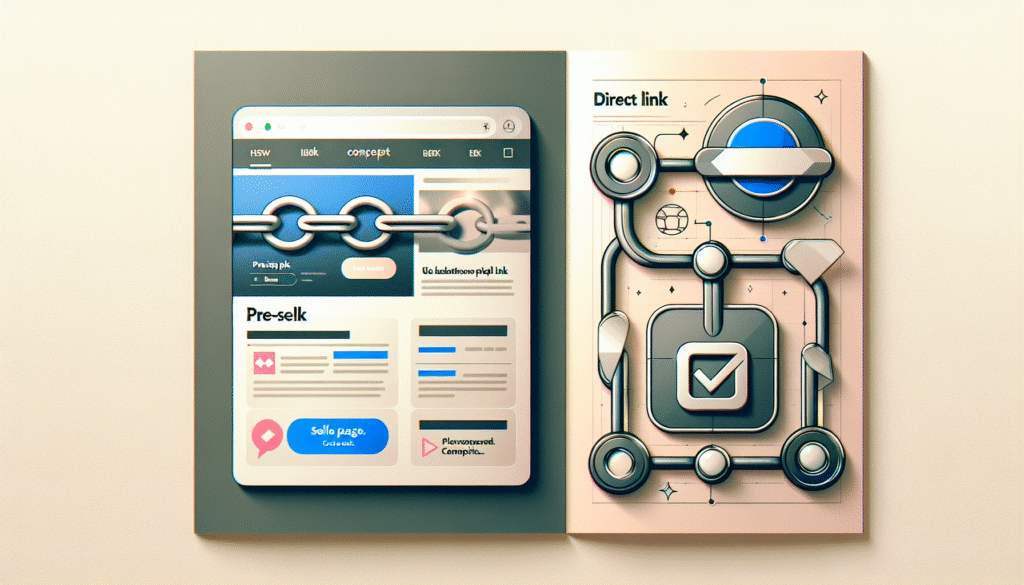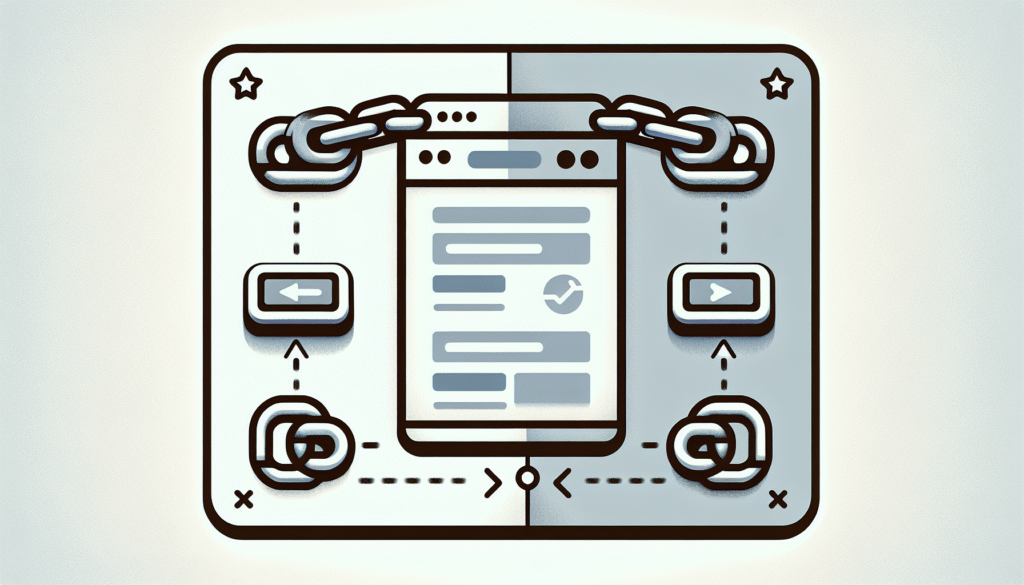Have you ever wondered which marketing strategy works better: pre-sell pages or direct links? This question is a bit like debating whether it’s better to prepare a home-cooked meal or just grab a dish from a fast-food joint. Both options have their merits, but which one leaves us more satisfied and perhaps even… a bit richer?
In the bustling world of online marketing, it’s easy to get swayed by quick links promising immediate results. After all, who doesn’t want immediate gratification, right? But in our quest to maximize those hard-earned dollars, we decided to put both strategies to the test with a $900 budget. What we discovered was a mix of enlightening revelations and a couple of lessons you’d rather learn from us than first-hand.

What Are Pre-Sell Pages and Direct Links?
Before diving into the nitty-gritty, let’s clarify what we mean by pre-sell pages and direct links. Understanding these concepts is crucial to making sense of our findings.
Pre-Sell Pages
Think of pre-sell pages like a warm handshake. These are the introductory pages created to build a connection with potential customers before they reach the actual product or service. A good pre-sell page educates, informs, and builds trust, laying the groundwork for a purchase decision later. These pages don’t scream “Buy Now!” but rather whisper, “Let us walk you through why you need this.”
Direct Links
Direct links, on the other hand, are the express trains to purchase-town. When someone clicks on a direct link, they are immediately whisked away to the sales page or product listing without any preamble or introduction. It’s a straightforward sales pitch—no frills, just the essentials.
The Experiment: Spending $900 Wisely
We decided to test both strategies by deploying each with a portion of our $900 budget. Our aim was to see which method would yield more leads, higher engagement, and ultimately, better conversion rates. Here’s how we did it and what we learned.
Parsing Out the Budget
We divided our $900 equally between the two strategies, dedicating $450 to pre-sell pages and $450 to direct links. This balanced division allowed us to maintain a fair comparison.
Crafting the Content: Heart vs. Speed
For the pre-sell pages, we focused on creating content that was engaging and informative. We wanted potential customers to feel like they stumbled upon a valuable resource. Our content was detailed, often featuring testimonials, educational snippets, and background stories on the products.
In contrast, for the direct links, we trimmed down on the storytelling approach. It was all about conciseness: a sprinkle of detail and a strong call-to-action.
Marketing Channels Used
We deployed both strategies across various channels to ensure a broad reach. Here’s a breakdown of where our dollars went:
| Channel | Pre-Sell Pages Budget | Direct Links Budget |
|---|---|---|
| Social Media | $150 | $150 |
| Email Campaigns | $150 | $150 |
| Paid Ads | $150 | $150 |

Results: Parsing Through the Data
Once our money was spent and campaigns wrapped up, the results began to trickle in. We scrutinized metrics such as click-through rates, conversion rates, and overall engagement to see which strategy performed better.
Click-Through Rates (CTR)
The first indicator of interest was how many people actually clicked through our content. Here’s what we found:
- Pre-Sell Pages: Our CTR for pre-sell pages was around 20%. Not bad, considering people love a good story and were engaged with our content.
- Direct Links: Here, the CTR was slightly higher at 25%. The direct “Buy Now” vibe did capture immediate attention.
Conversion Rates
Clicks are great, but conversions are what really matter. This is where things got even more interesting:
- Pre-Sell Pages: The conversion rate was at 10%, meaning our soft-sell approach did encourage people to make a purchase after engaging with the content.
- Direct Links: A tad lower, the conversion rate stood at 7%. Without the trust-building content, fewer people made it to the checkout page.
Engagement and Time on Page
Engagement metrics, particularly time spent on page, revealed even more:
- Pre-Sell Pages: Users spent an average of 2 minutes per page, immersing themselves in our content.
- Direct Links: Here, the average time was 30 seconds, enough for a glance before deciding whether to purchase.
What We Learned: The Verdict
Through this experiment, numerous lessons emerged. Let’s break them down, shall we?
Trust vs. Impulse
Pre-sell pages harness the power of trust. By offering valuable information upfront, customers felt more confident making a purchase. It’s like inviting someone to dinner and serving them a delightful entrée, rather than just handing them the check.
Direct links, which focus on urgency, relied more on impulse buys. This worked as well, but to a lesser extent given the lack of a nurturing period.
Audience Matters
We also learned the importance of knowing your audience. For consumers who prefer to research extensively before buying, pre-sell pages are essential. Conversely, those who know exactly what they want might appreciate direct links.
Repeat Business and Customer Loyalty
Another nugget of wisdom gleaned was how investment in pre-sell pages can foster repeat business. Customers appreciated the detail and care put into the content, which translated into a trustworthy brand image. This is crucial for long-term growth.
Cost and Time Investment
Undoubtedly, pre-sell pages required more upfront effort in terms of content creation. The wins weren’t as instantly gratifying as with direct links. However, the depth of customer engagement and conversion quality justified the time and financial input.
Adjusting Strategies for the Future
With our experiment concluded, it’s time to look towards future strategies. How do we harness these insights to better our marketing efforts?
Balancing Both Approaches
There’s value in blending both approaches depending on the product or service in question. High-value items might benefit more from pre-sell pages, while lower-cost, impulse-buy items could thrive via direct links.
Continued Testing
The marketing landscape is dynamic, and continued experimentation is key. Our findings are a snapshot and a great place to start, but constant testing ensures that we adapt to changing consumer behaviors.
Personalized Approaches
Introducing personalization elements into pre-sell pages can elevate engagement. Tailoring content based on user preferences or past interactions makes the pre-sell page even more effective.
Conclusion: Our Takeaway
To wrap up, spending $900 across pre-sell pages and direct links taught us a great deal about consumer behavior and effective marketing strategies. While direct links cater to straightforward and immediate purchasing decisions, pre-sell pages offer a rich narrative that builds trust and leads to higher conversion rates. Balancing both strategies allows us to cater to different market segments, leveraging the strengths of each approach.
By nurturing a capable narrative with pre-sell pages and catering to the swift decision-makers with direct links, we found a harmonious blend that maximizes our marketing efforts.
So, if you’re standing at that marketing crossroads, with $900 (or any other amount) burning a hole in your pocket, consider the journey your customer will take. Do they need the soft touch of a pre-sell page, or are they ready for the direct route? Whatever the answer, know that your approach is about more than just selling a product; it’s about selling a story, one click at a time.
